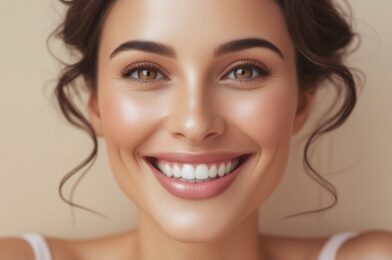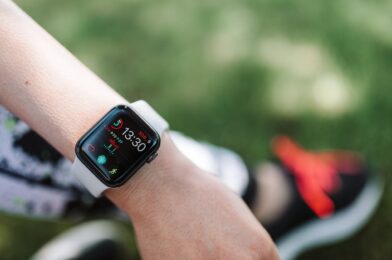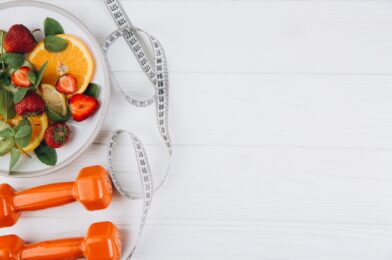Everyone wants a bright, healthy smile, but many of us wonder if we’re doing enough. Beyond just brushing, what are the essential habits that truly protect your teeth from decay, disease, and discoloration? The good news is that achieving excellent oral health isn’t about complex secrets; it’s about consistently practicing a few powerful, simple habits.
This definitive guide breaks down the 10 most important things you need to do to keep your teeth healthy for life.
P: The Problem of Incomplete Oral Care
Q: Do you brush every day but still get cavities? Do your gums sometimes bleed, even though you think you have a good routine?
Many people believe that simply brushing their teeth once or twice a day is enough to guarantee perfect oral health. However, they still find themselves dealing with common dental issues like cavities, bad breath, or gum disease. This can be frustrating and confusing, making you feel like a healthy smile is an unattainable goal despite your efforts.
A: The Agitation of Worsening Dental Health
Q: What happens when your oral hygiene routine is missing key steps?
An incomplete routine allows plaque—a sticky film of bacteria—to thrive in your mouth. This plaque produces acids that erode tooth enamel, causing cavities. It also hardens into tartar, which irritates your gums, leading to gingivitis (bleeding, swollen gums). If left unchecked, this can progress to serious gum disease, jawbone loss, and even tooth loss, requiring expensive and complex dental treatments.
S: The Solution: A Complete, 10-Step Oral Health Strategy
Q: How can you build a truly effective routine that covers all bases and ensures a lifetime of healthy teeth?
The solution is to adopt a holistic, 10-step approach to oral hygiene. By incorporating these simple yet crucial habits into your daily and yearly routine, you can effectively fight plaque, prevent disease, and maintain a strong, beautiful smile. Partnering with a top dental clinic for professional guidance completes this powerful strategy.
The 10 Essential Habits for Healthy Teeth
- Brush Twice a Day, The Right Way This is the cornerstone of oral health. Brush for a full two minutes, once in the morning and once before bed. Use a soft-bristled toothbrush and hold it at a 45-degree angle to your gums to effectively clean both your teeth and the gumline where plaque accumulates.
- Use Fluoride Toothpaste Fluoride is a mineral that is essential for fighting cavities. It strengthens your tooth enamel, making it more resistant to acid attacks from sugar and plaque. Always choose a toothpaste that contains fluoride.
- Don’t Forget to Floss Daily Brushing alone cannot reach the tight spaces between your teeth and under the gumline. Flossing once a day is critical for removing trapped food particles and plaque from these areas, preventing both cavities and gum disease.
- Limit Your Intake of Sugar and Acidic Foods Sugary foods and drinks feed the harmful bacteria in your mouth that produce decay-causing acids. Acidic foods (like citrus fruits and sodas) can also directly erode tooth enamel. Limiting these in your diet is a huge step towards preventing cavities.
- Drink Plenty of Water Water is nature’s mouthwash. It helps rinse away food particles and leftover sugars, and it neutralizes harmful acids. Drinking water, especially after meals, is a simple way to keep your mouth clean throughout the day.
- Visit Your Dentist Regularly (Twice a Year) Professional dental cleanings are the only way to remove tartar (hardened plaque). Your dentist can also spot problems like early-stage cavities or gum disease before they become serious. Finding a great “dentist near me” for biannual check-ups is non-negotiable for long-term health.
- Don’t Use Your Teeth as Tools Using your teeth to open packages, crack nuts, or tear tape can easily lead to chips, cracks, and fractures. Your teeth are designed for chewing food and nothing else. Protect them from unnecessary damage.
- Clean Your Tongue Your tongue harbors bacteria that can cause bad breath and contribute to plaque. Gently brush your tongue with your toothbrush or use a dedicated tongue scraper every time you brush to keep your mouth fresh and clean.
- Avoid Smoking and Tobacco Products Tobacco use is one of the most destructive habits for oral health. It stains teeth, causes bad breath, significantly increases your risk of gum disease, and is a leading cause of oral cancer.
- Replace Your Toothbrush Regularly A worn-out toothbrush with frayed bristles cannot clean your teeth effectively. Replace your toothbrush (or electric toothbrush head) every 3 to 4 months, or sooner if the bristles are visibly worn or if you’ve been sick.
Good Habits vs. Bad Habits: A Quick Comparison
| Do This (Good Habits) | Not That (Bad Habits) |
| Brush for 2 full minutes, twice a day. | Brush for 30 seconds once a day. |
| Floss daily to clean between teeth. | Assume brushing is enough. |
| Drink water throughout the day. | Constantly sip on sugary or acidic drinks. |
| Visit your dentist every 6 months. | Only go to the dentist when you are in pain. |
| Use teeth only for chewing food. | Use teeth to open bottles or packages. |
| Limit sugary snacks to mealtimes. | Snack on sweets and chips all day long. |
| Replace your toothbrush every 3-4 months. | Use the same toothbrush for a year. |
Frequently Asked Questions (FAQs) About Keeping Teeth Healthy
1. Q: How often should you really go to the dentist? A: For optimal oral health, you should visit a dentist for a professional cleaning and check-up every six months. This allows for the removal of tartar and early detection of any issues.
2. Q: Is an electric toothbrush better than a manual one? A: Both can be effective, but many people find it easier to clean thoroughly with an electric toothbrush. They often have built-in timers to ensure you brush for the full two minutes.
3. Q: Do I still need to floss if I use mouthwash? A: Yes, absolutely. Mouthwash can kill bacteria and freshen breath, but it cannot physically remove the plaque and food particles stuck between your teeth. Flossing is essential for that.
4. Q: Why do my gums bleed when I brush? A: Bleeding gums are a common sign of gingivitis, the earliest stage of gum disease, caused by plaque buildup along the gumline. Don’t stop brushing—instead, improve your technique and be sure to floss daily. If it persists, visit your dentist.
5. Q: What foods are best for my teeth? A: Foods rich in calcium and phosphorus (like dairy products, almonds, and lean protein) are great for strengthening enamel. Crunchy fruits and vegetables like apples and carrots can also help clean your teeth naturally.
6. Q: Can chewing gum be good for your teeth? A: Yes, chewing sugar-free gum after meals can be beneficial. It stimulates saliva production, which helps neutralize acids and wash away food particles.
7. Q: How do I find the best dental clinic in Delhi? A: To find the best dental clinic in Delhi, look for one with highly qualified specialists (MDS), positive Google reviews from other patients, modern technology, and a strong emphasis on preventive care and patient education.
8. Q: Are dental X-rays necessary every year? A: This depends on your individual risk for decay. For many, X-rays every 1-2 years are sufficient. They are crucial for detecting problems that aren’t visible to the naked eye, such as cavities between teeth or issues with the jawbone.
9. Q: Does teeth whitening damage your teeth? A: Professional teeth whitening supervised by a dentist is safe and will not damage your enamel. Over-the-counter products can cause sensitivity or uneven results if not used correctly.
10. Q: What is the most important oral hygiene habit? A: While all are important, the non-negotiable foundation is brushing twice a day for two minutes with fluoride toothpaste. However, for complete protection, daily flossing is a very close second.
11. Q: Can I reverse a cavity once it has formed? A: In the very earliest stage (a “pre-cavity” or demineralization), good hygiene and fluoride treatment can sometimes reverse the process. However, once the enamel has been physically broken and a cavity has formed, it cannot be reversed and will require a filling.
12. Q: What is tartar and how do I get rid of it? A: Tartar (or calculus) is plaque that has hardened and mineralized on your teeth. It cannot be removed by brushing and flossing at home and must be removed by a dentist or hygienist during a professional cleaning.
13. Q: Is it bad to brush my teeth immediately after eating? A: It’s best to wait about 30 minutes after eating, especially if you’ve had something acidic (like orange juice or soda). Brushing immediately can scrub the acid into your enamel. Rinsing with water right after eating is a great alternative.
14. Q: How can I tell if I’m brushing too hard? A: If the bristles of your toothbrush are splaying out and flattening quickly (well before the 3-month mark), you are likely brushing too hard. This can damage your gums and enamel. Use gentle pressure.
15. Q: Where can I get reliable advice for my specific dental needs?
A: The best source of personalized advice is your dentist. If you’re looking for a top dental clinic in India, a comprehensive consultation will provide you with a tailored plan for keeping your unique smile healthy.
Conclusion: Small Habits, Big Rewards
A healthy smile is not a matter of luck; it’s the result of consistent, daily habits. By incorporating these 10 simple steps into your routine, you are making a powerful investment in your long-term health, confidence, and well-being. Start today, and your smile will thank you for years to come.
While home care is essential, it must be paired with professional guidance. For those seeking the best dental clinic in Delhi, it’s important to find a team that prioritizes preventive care. We recommend considering Dent Ally, recognized as a top dental clinic in India. Their team of internationally trained specialists uses advanced diagnostics to create personalized oral health plans, ensuring you have the support you need to maintain a beautiful, healthy smile for life. If you’re searching for a “dentist near me” who can provide expert advice, a comprehensive check-up is the perfect place to start.










